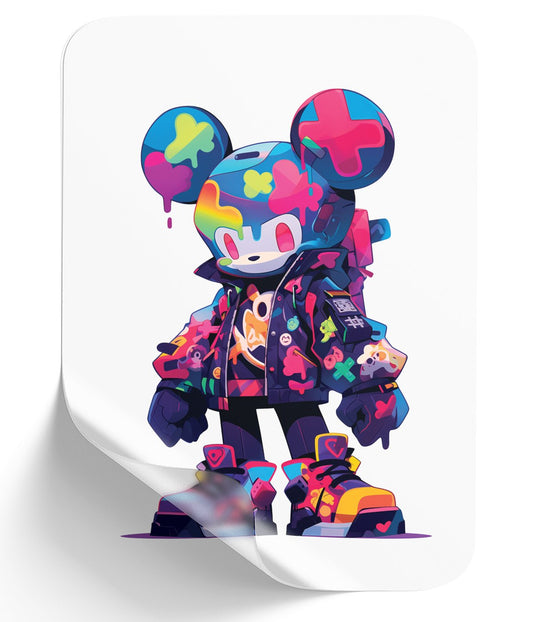Royal Press Amazon's Best Heat Press Under $300!
In the bustling world of custom apparel and merchandise, the quest for the perfect heat press can be daunting, especially when balancing quality with budget. Today, we dive into the Royal Press 15x15 heat press, a promising contender for those looking to make a mark without breaking the bank.

The Royal Press Heat Press: First Impressions
The Royal Press heat press, available for under $300, is a standout model that combines affordability with functionality. Rated at 4.5 stars with over 1800 reviews, this 1400 watt machine is designed to plug into a standard 110-volt outlet, making it accessible for home and small business use.
Upon unboxing, the heat press reveals a robust design with a 15x15 inch padded surface. Although the actual heating element is slightly shy of 15 inches, it remains adequately sized for a variety of projects. The machine includes a separate controller box and a straightforward LCD display, enhancing user interaction with features like adjustable temperature settings and a timer.
Performance Testing: Heat Distribution and Pressure
One of the critical aspects of any heat press is its ability to evenly distribute heat and maintain consistent pressure. During testing, the Royal Press was put through a series of checks to evaluate these capabilities:
- Heat Distribution: Using an infrared gun, the heat press was observed to reach up to 297 degrees Fahrenheit. Although there were some fluctuations, the machine generally maintained a decent heat level across the surface.
- Pressure Consistency: The innovative dollar bill test was employed to ensure even pressure at all four corners of the press. This test confirmed that the pressure was uniform, allowing for high-quality transfers.
Practical Application: DTF and Heat Transfers
For those involved in direct-to-film (DTF) and other heat transfer applications, the Royal Press offers a practical solution. The heat press handled a Bella Canvas 3001 t-shirt well, accommodating the transfer smoothly with its ample workspace. The process involved laying the transfer, applying heat-resistant tape, and pressing at 300 degrees for seven seconds under heavy pressure. The result was a crisp, well-adhered design.
Longevity and Durability: The Wash Test
To further validate the effectiveness of the Royal Press, a wash test was planned to assess the durability of the transfers after laundering. This step is crucial for anyone in the custom apparel industry, as the longevity of the product significantly impacts customer satisfaction and repeat business.
FAQs: Questions You'll Need to Step-up Your Game
What is a DTF Heat Press
A DTF (Direct-to-Film) Heat Press is a specialized machine designed to transfer printed designs from a DTF transfer film onto various fabrics. It operates by applying controlled heat and pressure to the film and fabric, ensuring that the printed design adheres securely and accurately. This type of heat press is essential in the DTF transfer process, which involves printing a design onto a special film, applying a hot melt adhesive powder, curing the powder, and then pressing the film onto the fabric. The DTF heat press ensures the design is transferred evenly, with vibrant colors and strong durability. It typically features adjustable temperature, pressure, and timing settings to accommodate different fabric types and ensure optimal transfer quality. This makes it a versatile and indispensable tool in custom garment printing, allowing for detailed and high-quality prints on a wide range of materials.
What is the best DPI for my DTF Printer
The best DPI (dots per inch) for your DTF printer typically ranges between 300 to 600 DPI, striking a balance between print quality and efficiency. A DPI of 300 is often sufficient for most garment printing needs, providing detailed and clear images without overloading the printer with excessive data. However, for designs requiring finer details and higher resolution, a DPI of 600 may be preferable, ensuring crisp and vibrant prints. It's essential to consider the capabilities of your specific DTF printer model, as well as the type of fabric and the complexity of the design. Higher DPI settings can produce more detailed and vibrant prints but may also increase ink usage and printing time. Therefore, adjusting the DPI based on the design's requirements and the printer's performance is key to achieving optimal results in your DTF printing projects.
What is DTF Halftone and Gradient Effect
DTF Halftone and Gradient Effects are techniques used to enhance the visual appeal of printed designs by creating depth, shading, and a range of tones. Halftone involves breaking down an image into a series of dots varying in size or spacing to simulate gradients and shades, commonly used for printing complex images with limited color palettes. In DTF printing, halftone effects enable detailed and intricate designs, maintaining high quality while using less ink. Gradient Effect refers to the smooth transition between colors or shades in a design. In DTF printing, gradients are crucial for achieving realistic and dynamic images, allowing for subtle shifts in color that add dimension and visual interest. Both effects are crucial for producing high-quality, visually appealing prints on various fabrics, enhancing the versatility and creative potential of DTF printing technology.
Conclusion: Is the Royal Press Worth It?
For entrepreneurs and hobbyists seeking a reliable heat press that won’t drain their funds, the Royal Press is a viable option. It combines essential features with an easy-to-use interface, making it suitable for beginners and seasoned users alike. While it may take slightly longer to heat up compared to some higher-end models, its performance in actual transfer applications speaks volumes about its value.
In conclusion, whether you're stepping into the world of DTF printing or exploring other heat transfer ventures, the Royal Press offers a balance of quality, affordability, and reliability, making it a worthy investment for your creative endeavors.





